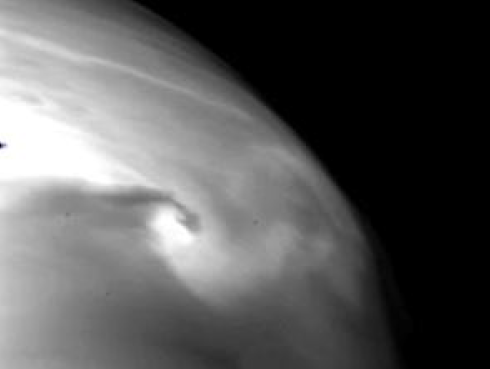
NASA has selected a proposal that it could use for a probe mission to explore Venus. The proposal involves using a spacecraft that looks and moves like a stingray in the water. It is often referred to as Earth's sister planet due to their similar size, mass and proximity to the Sun. Despite their similarities, Venus is a hostile planet that has inhospitable environmental and atmospheric conditions.
This is one of the reasons why it's hard to explore Venus even with a robotic probe. But, this could soon change through an innovative spacecraft design proposed by the Crashworthiness for Aerospace Structures and Hybrids (CRASH) Laboratory of the University of Buffalo.
The spacecraft, known as the Bio-Inspired Ray for Extreme Environments and Zonal Explorations (BREEZE) was recently selected by NASA for its Innovated Advanced Concepts. This program provides funding for exceptional technological concepts that can be used for space exploration.

According to the developers of BREEZE, the spacecraft will feature a unique design that's different from traditional planetary probes. Instead of a conventional structure, it will be equipped with flapping wings that are similar to the pectoral fins of a stingray.
These wings, which can morph depending on the situation, will provide the probe with the necessary thrust and lift to glide through Venus' atmosphere. They will also provide the probe with better stability during flight. The scientists behind BREEZE noted that these are important factors when it comes to navigating through Venus's harsh conditions.
Javid Bayandor, the project's lead investigator and director of the CRASH Lab, explained that BREEZE's unique nature-inspired design will allow the probe to take advantage of the powerful winds in Venus' upper atmosphere. It will also provide scientists with perfect control of the probe during its mission.
"By taking our cues from nature, specifically sea rays, we're looking to maximize flight efficiency," Bayandor said in a statement. "The design will allow for a so-far unattained degree of control for such a spacecraft that would be subject to severe zonal and meridional winds on the planet."
According to CRASH Lab's scientists, BREEZE's mission will involve navigating Venus every four to six days to monitor the planet's weather patterns, atmospheric conditions and volcanic activity. It will be able to do so continuously through its solar-powered design.








